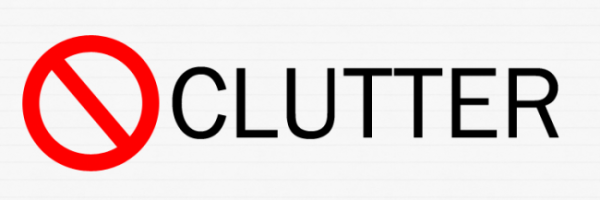
I’m convinced. I need less stuff. The Life-Changing Magic of Tidying Up has, as the title claims, changed my life.
I’ve read posts and books before on organisation and ‘speed cleaning’ and living simply, but this book was different. I think it’s largely because the author, Marie Kondo, is kind of crazy, in a totally endearing way. Her passion for tidying is so deep and real, you can’t help but be swept along by it. She’s Japanese and the book was presumably originally written in Japanese so there are somethings that I’m putting down to cultural differences/translation that kind of give the book, and her method, a bizarre, but comfortable, quirkiness. Although she explains that tidying is simply two physical actions – discarding and deciding where to store something – she also focuses heavily on the emotional and spiritual experience of tidying and living an uncluttered life.
My two key takeaways were firstly, decluttering starts with discarding. ‘Organising’ doesn’t actually solve the problem and and in fact ’storage solutions’ actually encourage hoarding. Before you start doing any kind of organising, rearranging etc, you first need to discard. It makes so much sense now but I admit I was one of those people who just thought I needed to get more ‘organised’ and would be easily lured by crates and containers and fancy storage shops.
The second core takeaway, and the principle at the heart of the KonMari discarding process, is to handle each item (this is important) and ask ‘does this spark joy?’. Rather than just a utilitarian approach to determine what you ‘need’ and what you don’t, her approach seems to make you value and appreciate your things. The KonMari method recognises, celebrates and encourages a kind of personal, emotional connection with belongings (eg. thanking your things for the service that they’ve performed).
As an example, the bit in the book about to (and not to) store socks was a personal favourite…
I pointed to the balled-up socks. “Look at them carefully. This should be a time for them to rest. Do you really think they can get any rest like that?
This book has got me interested and started me down a bit of a rabbit-hole. I’m interested in learning and exploring minimalism and what it is, what motivates people to pursue a minimalist lifestyle (whether they are consciously aware of that label or not) and how to do it.
The possibilities that emerge from living a minimalist life excite me. One of the first things Marie Kondo does in her book is get you to picture your space tidy and free of clutter. What it would be like to live in this space? How you would use it? What would you do in it? How it would make you feel?
I’m so attracted to my vision of my minimalised space and what it would mean for my life… The things that are important to me are on display and are visible and highlighted without the ’noise’ from the clutter. I spend less time ‘organising’ (essentially moving things from one area to another) and cleaning, and more time to spend on things that I really value. I’m proud and excited to welcome people in to my home. I spend less money buying ‘stuff’. I’m not encumbered by belongings. We can move overseas or interstate if an opportunity arose, without being terrified of the packing and moving involved. We could have another child without having to move to a larger house just to have ‘enough room’.
While I’m on board and committed to making this happen, right now I feel like a fraud. A wannabe. And hence the title of this post, and this series… ‘the wannable minimalist’. This is where I am in the journey at the moment. I’m very much at the start. This is very much an aspiration rather than a reality. But I’ve started. I’m doing it. I’m culling and discarding. And referring frequently to that vision to keep me motivated. And I’m going to chronicle my journey here. Mainly for myself, but maybe you’ll also find it interesting or inspirational too.
Leave a Reply